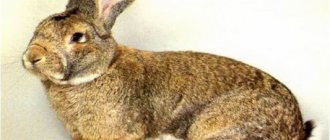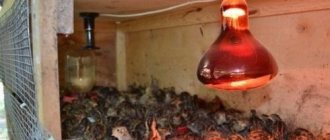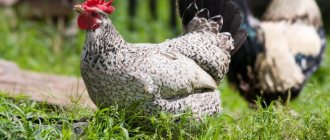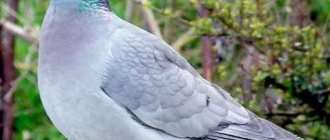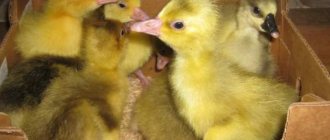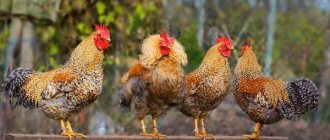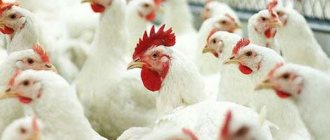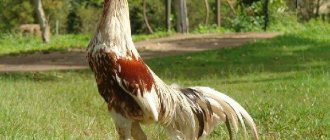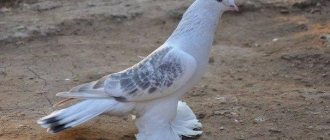Review author: “ZooVita”
We lived with our grandmother... The words of a simple song, familiar to everyone from childhood, speak of the great popularity of this domestic animal. Man understood the benefits of birds a long time ago. According to scientists, the domestication of the goose occurred three to four thousand years ago.
Of all the birds bred by humans, geese are the most adapted to obtaining their own food. People raised geese at home to obtain meat, fat, down, and feathers. True, after the invention of pens, the need for goose feathers disappeared.
Conditions of detention
Very often, people planning to breed geese are interested in the following questions:
- how and what to feed the bird;
- how long do domestic geese live?
- in what conditions it is necessary to keep pets;
- which breeds are the most productive, etc.
Significant factors influencing the length of the life cycle of geese are:
- conditions of detention;
- feed quality;
- belonging to one breed or another.
It is also necessary to note negative phenomena that can have an extremely negative impact not only on life expectancy, but also on egg production, weight, and the quality of the bird’s down. This:
- stagnant water in drinking bowls;
- lack of cleanliness in the room where geese are kept;
- dirt in walking areas;
- poor quality food;
- lack of proper care when identifying various diseases.
With a caring owner who pays attention to all of the above factors, with adequate care, the bird can live fifteen to twenty years without problems.
What determines the lifespan of domestic geese?
Let's talk about how many years geese live in accessible conditions.
The average lifespan of a domestic goose is 15-20 years. However, there are cases where feathered birds lived up to 40 years.
But only small ornamental breeds will live that long. Or species used as genetic material to breed new varieties. For example, Javakheti ganders, which live up to 30 years.
On an industrial scale, the lifespan of geese is 7-8 years. This indicator is typical for egg-laying breeds. Meat species are often slaughtered before the first molt - at 8-9 weeks.
On private plots, geese of egg-laying breeds are kept until they lay eggs - up to approximately 8 years. Meat breeds hold on until they gain maximum weight - somewhere up to 1-2 years.
Ganders live for about 4-6 years per tribe.
How long geese of domestic breeds live is also influenced by their housing conditions and diet. More on this later.
Diet
Organizing proper nutrition is one of the main conditions for the long existence of geese. The healthiest birds will be those that have access to a natural body of water, and during summer grazing, the opportunity to “nip” nettles, clover, and various herbs.
In winter, experts recommend feeding birds hay and silage.
At any time of the year the following will not be superfluous:
- vegetables (potatoes, beets, carrots);
- grain crops (oats, rye, wheat);
- aquatic plants.
It is necessary to add salt and chalk to food. Sand and small stones (gravel, pebbles) are necessary for geese to digest food.
Owners of geese who want to achieve rapid growth of the bird will have to add vitamins A, E, B2 to the feed. This is especially true for goslings under the age of two years.
Reproduction and breeding of geese at home for beginners
Experienced farmers breed poultry. Beginning poultry farmers raise goslings in the summer, but if desired, they can also raise broodstock all year round. For the purpose of breeding offspring, the best representatives of the breed are selected. For every 3 females in the herd, no more than one goose is left.
Reproduction requires winter maintenance - geese begin to lay eggs in winter, about a month after additional lighting is turned on in the house. Eggs must be removed from the nests every morning while they are still warm, and stored for no more than 10 days before being laid for incubation.
Natural hatching
In April, when the first green grass appears, the geese begin to hatch their eggs. The room for brood hens should be dry and clean, free of foreign odors, with an air temperature of at least +12 °C.
Eggs cannot be moved from the nest; the bird will refuse to sit on them, and the embryos will die. You can place good eggs under the female, removing those that have a defect. Their total number should not exceed 13 pieces.
During the hatching process, the goose should not be disturbed; it can behave aggressively. To moisten the eggs with moisture, the bird must have free access to a body of water. The hen is given grain waste, dry feed mixtures, and cottage cheese as food. There should always be clean drinking water nearby.
The first goslings appear on the 27th day of incubation. When they are dry, they are moved to a dry box.
Application of incubator
If geese refuse to hatch their offspring, an incubator will be of great help in breeding goslings. It allows you to create optimal conditions for hatching chicks. Temperature and humidity during incubation should be maintained automatically.
There are certain requirements for hatching eggs:
- the shell is clean and smooth, without growths or punctures;
- the shape of the eggs is oval-round, elongated and round specimens are rejected;
- weight is approximately the same - 135 g for medium breeds and 185 g for large breeds;
- When checking with an ovoscope, 1 yolk and no dark spots are required.
Eggs intended for laying in the incubator are not washed during storage.
Organization of pens
In addition to the question of what to feed domestic geese, an equally important factor is to ensure normal living conditions for the birds.
In general, geese are quite hardy creatures - they adapt to both heat and cold. However, this does not mean that one can take a careless approach to the arrangement of their home.
Several prerequisites must be met:
- The minimum area in the pen per bird should be one square meter.
- There should be good lighting in the room, because... in a dimly lit pen, productivity decreases and the immunity of geese decreases.
- Ventilation installation is required. Geese defecate frequently and this leads to increased humidity in the room.
- Birds need to be provided with dry bedding - although they tolerate cold well, the paws and beak of birds are very sensitive to negative temperatures. It is necessary to throw straw, sawdust, and hay on the floor.
- The optimal temperature in winter is considered to be zero degrees. If necessary, installation of heating devices will be required.
It is strictly prohibited:
- keep geese in a damp and dark room;
- in mud and without bedding;
- in pens where drafts may occur.
Tips for beginning breeders
In good winter weather, geese should be let out for a walk. Birds may nibble on snow-covered grass or plant roots.
It is not necessary to keep geese indoors in the summer. However, you should fence off the walking area and place feeders and drinking bowls. It is advisable to install a large container of water for bathing.
Basic rules for keeping pets
Feeding
It has long been noted that geese living on free grazing live longer than birds constantly kept indoors. During walks, birds feed themselves with natural food rich in useful and nutritious substances.
Additional complementary foods include combined feeds, boiled vegetables, cottage cheese, sprouted grains, feed yeast, fish oil, cake, additives with a high content of mineral elements: meat and bone and fish meal, crushed shells, chalk.
It is recommended to adjust the composition of the feed depending on the season, the period of laying and hatching of chicks. Constant access to fresh food is desirable. How to create a menu correctly, read the article “What to feed geese from the first days of life at home.”
Summer content
It is widely believed that for a fruitful breeding of domestic geese, it is necessary to have a body of water near their residence. For example, Kholmogory ganders swim even in icy water.
However, this is a convention. A homemade font with regularly fresh water is often sufficient. How to make it can be seen using the example of the article “Building a pond for ducks on a summer cottage with your own hands.” The information is also relevant for geese.
In the summer, the birds do without a gooseneck and spend the night well in an open enclosure. Its area is calculated based on the number of birds: 1 sq. m. for 2-3 birds. The enclosure area is equipped with feeders and drinking bowls. During the day, it is recommended to release the birds to free grazing. The area of the walking area is at least 5 square meters. m. for 1 individual.
Winter content
In winter, the birds are transferred to the goose barn. Area: 2 sq. m. for 3 individuals. The room should be draft-free, with sufficient fresh air to prevent fungal deposits. Straw mixed with sawdust is laid on the floor. What else you need to know about the poultry house, read the article “Building a barn for geese with your own hands.”
In a goose shed, periodic sanitary treatment of walls and floors with lime mortar and regular replacement of bedding material are required. Sand, gravel, shells and chalk are poured near the feeders.
Hatching of offspring
For 3-4 geese it is enough to keep 1 gander. Geese lay eggs in February-March. At this time, additional lighting is needed to maintain daylight hours up to 14 hours, and insulation of the masonry areas. For 2-3 individuals, 1 nest is installed, the construction of which is described in the article “How to make a nest for geese with your own hands.”
Particular attention is paid to newborn and young goslings. A separate clean room is allocated for their maintenance, the temperature is not lower than 16-18 degrees. Routine vaccinations will help protect birds from viral and infectious diseases. At the first signs of illness (loss of weight and appetite, lethargy), you should consult a veterinarian.
The most ancient
The most ancient breeds bred by man include geese from Toulouse and Italy.
Breeders from France crossed wild gray geese for a long time until they achieved the desired result. Poultry meat is very highly prized (especially in America).
Geese are large, massive and lazy. They are not suitable for keeping on pastures. Birds are kept for fattening to produce a large amount of meat.
It is believed that the Italian breed became the progenitor for many modern varieties of domestic geese.
Their distinctive feature is the high taste of meat and especially fatty liver, ideal for preparing the famous foie gras pate.
Birds can do without bodies of water and can be kept in a limited space. They are very independent and do not want to come into contact with other village animals.
Breeds of domestic geese
Almost all breeds of domestic geese originate from the wild gray goose; Chinese breeds descend from the dry-nosed goose. The Egyptian or Nile goose, Canada goose and other types of small geese are used as decorative birds.
All breeds of domestic geese are divided into meat, decorative, fighting and egg-laying.
The meat category includes those geese that are characterized by rapid weight gain and large size. These are the breeds:
- Kholmogorskaya,
- Danish,
- Large gray
- Uralskaya,
- Mamut,
- African.
Egg-laying breeds are characterized by egg production of up to 150 eggs annually, as well as a weak brooding instinct. By the way, the dough prepared with the addition of goose eggs is the fluffiest. Egg-laying breeds include:
- Chinese,
- Italian,
- Rhineland,
- Kubanskaya.
for purely decorative purposes . Sometimes small species of geese, such as the Egyptian goose, are kept for decorative purposes.
Fighting geese are a delight for true connoisseurs. Geese fights are bloodless, ganders fight for their beloved love goose. These breeds are characterized by large size, developed muscles, aggressive disposition, endurance, and resistance to cold and disease. They are distinguished by their vitality and low egg production. Fighting breeds include:
- Gorkovskaya;
- Arzamasskaya;
- Legendary Tula fighting.
The following breeds deserve close attention for home keeping.
Khokhloma
This is a common breed in Russia, bred at the end of the 19th century. Unlike other relatives, they are not aggressive and get along with other animals in the yard. They have low egg production and are bred mainly for meat.
The gander's weight reaches ten kg, and the female's weight reaches seven to nine. They are unpretentious in nutrition, tolerate cold well, and with proper care can live up to seventeen years.
Gorkovskaya
One of the youngest breeds. Although it was bred at the end of the 20th century, its population in modern Russia reaches 50% of the total number of domestic geese.
Excellent qualities have been recognized not only in the Russian Federation, but also in Europe. Geese of this breed have a significant mass and lay up to fifty eggs in one clutch. Geese are excellent hens, and from every ten eggs they hatch 9 chicks.
In the photo of domestic geese of this breed, the characteristic features of the birds are clearly visible - white plumage and a red bump on the forehead.
It is considered the most promising species for industrial breeding and production of meat and fluff.
Description of common domestic breeds
Purpose of breeding
The choice of breed directly depends on the purpose of breeding. If the goal is to sell meat, then it is important how much a domestic goose weighs. It is interesting that some goose species for meat production are also distinguished by increased egg production. Let's look at the description of the breeds of the most popular domestic geese.
Kholmogorskaya
Geese of this large breed have a bump on the head and fat folds on the belly. The live weight of an adult is 8–12 kg. Hardy and easy to care for. They tolerate winter cold well. Popular in the center of Russia.
Disadvantage: sexual maturity occurs at 3 years of age, low egg production - up to 30 eggs per year.
Lindovskaya
A meat breed with excellent taste. Weight up to 7-8 kg, white plumage, egg production begins at 8 months and reaches up to 65 eggs per year. They have thick and clean fluff. Distributed throughout the European part of the continent.
Disadvantage: the lack of a reservoir can lead to the death of the bird. It is recommended to equip darkened areas for poultry brooding.
Gray Geese
Large meaty birds weighing 8-9 kg. They have a white belly and gray feathers. Geese grow quickly and gain weight up to 5 kg by 2 months. Egg production - up to 40 eggs per year. Undemanding in care, they do well without ponds. Females responsibly incubate their offspring. They are bred in the European part of Russia.
Disadvantage: chick survival rate is up to 65-80%.
Demidovskaya
Medium-sized birds with white plumage and a crest in the frontal part. At 8 months they gain weight up to 6-8 kg. High egg production up to 70 pcs. in year. The bird is unpretentious in care and nutrition. The breed is used for raising meat and young animals on an industrial scale. Divorced in the center of Russia.
There are no disadvantages.
Danish legart
They are grown to obtain clean and thick fluff - up to 0.5 kg per individual per year. They have a medium build with white plumage. The weight of an adult is 5-7 kg. Unpretentious in care. The young gain weight up to 4 kg already at 3 months of age. Largely bred in Denmark.
Disadvantage: low egg production - 30-40 eggs per year. They do not tolerate temperature changes well.
Toulouse
Massive dark gray birds with a “pocket” under the beak. The weight of an adult goose reaches 12 kg, and that of a goose – up to 8 kg. With good fattening, it has massive sebaceous deposits. Common in France for growing livers weighing up to 400-600 g.
Disadvantage: low egg production: 25-35 eggs per year. Females do not have a developed maternal instinct; the survival rate of chicks is up to 60%. Birds are thermophilic, sensitive to drafts and temperature changes.
If you are interested in the article, please like and repost. In the comments you can share your observations with our readers.
Fighting breed
The descendants of the famous Lefty loved to have fun with goose fights in their free time. The Tula breed was originally bred precisely for this purpose. As a result, birds appeared with developed muscles, large bodies and an aggressive character.
The weight of males reaches nine kg, geese are only one kilogram lighter. They produce high quality meat. No special care rules are required.
Interesting Facts
The most famous story associated with geese is the legend of how sensitive birds saved Rome from the invasion of the Gauls.
The goose is far from a peace-loving bird. While defending its nest it can even injure a person.
Goslings begin to swim already on the second day of life.
In the cotton-growing states of the United States, geese are used before weed control. Birds do not eat cotton plants, but they pluck out and consume the weeds.
The gander is considered an exemplary family man - he lives with his goose all his life.
The Germans believe that geese are as good as dogs in terms of intelligence, loyalty and trainability.
In Russia, almost twice as many different breeds of birds have been bred as in the whole of Europe.
During the migration, the birds rise to the height of Chomolungma, and the official record is a rise of ten kilometers!
The Guinness Book of Records records the life expectancy record for a gander named George. The patriarch departed to the afterlife of the goose at the age of forty-nine years and eight months.
